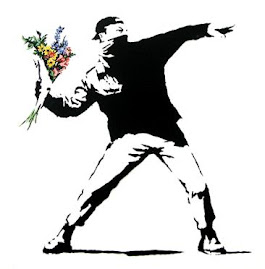The theme for
Youth Sunday at our church was “13 Reasons Why Not.” I’m not sure how many of them had seen the
Netflix show 13 Reasons Why. (For those who don’t already know, it’s about
Hannah, a high school student, who kills herself and records 13 reasons why she
did it.) Most of our youth are in middle
school and high school, so the serious nature of the issues on the show is
probably stuff they’ve encountered—if not in person, but possibly the friend of
a friend of a friend. I recently stopped
by the room where they were discussing their plans and said I like the show—and
please, for those who’ve seen all the episodes, no spoilers! I still had one more episode to go.
You’ve no
doubt heard reviews, both good and bad, about its content and how graphically it
portrays bullying, depression, rape, “slut-shaming,” and of course,
suicide. Some have said that it
glorifies suicide. I found the exact
opposite to be true. 13 Reasons Why is such a brutally ironic
title.
Nic Scheff,
author of episode 6, “Tape 3, Side B,” in which Hannah’s Valentine’s Day is
horribly ruined by a groping Marcus, addresses the critics. In a Vanity Fair article, he speaks of the unflinching way the show depicts suicide. A former meth user who attempted suicide, he
speaks as one who has his own story of depression and the desire to end it
all. He acknowledges the ever-present
realities that young people face, but he also reflects on how timely the show
is. “I saw the opportunity to explore
issues of cyberbullying, sexual assault, depression, and what it means to live
in a country where women are devalued to the extent that a man who brags about
sexually assaulting them can still be elected president.”
It doesn’t
look like Scheff would soft-pedal suicide.
He notes, “For me, I’d lost everything. I couldn’t stay sober; I’d destroyed my life
and nearly destroyed my family—and there seemed no possibility of anything ever
getting any better. They say suicide is
a permanent solution to a temporary problem, but the problem really didn’t seem
all that temporary. In fact, it seemed
f*cking eternal.”
Clay (along
with Hannah, of course) is the focal point of the show, which constantly transitions
from the present to the past. In the
present (post-suicide), he crashes while riding his bike and cuts his head on
some branches. Just as it’s beginning to
heal, Clay gets into a fight with Bryce, the guy who raped Hannah. He bears his wounds, clearly a commentary at
several levels.
Mixed in with
all of that gloom and doom, there are some truly joyous moments. I love Tony, with his love of 80s music and
his Walkman, which requires the archaic information storage devices known as
cassettes! He and his dad keep his ’68 Mustang
in peak condition.
And though
she has a small role in the show, I really like Skye. Once upon a time, she had a crush on Clay (and
still does, but Clay seems oblivious to it).
She went from being “normal” to having piercings and tattoos—which is
kind of normal, except in their high school, it still seems to be an act of
defiance.
Right now, 13 Reasons Why is on the cutting
edge. (I’m sorry; I didn’t mean for that
to be a dreadful pun.) The creators of the
show hope it leads to conversations which are ever more honest. Surely there are more than 13 reasons for
that.














No comments:
Post a Comment